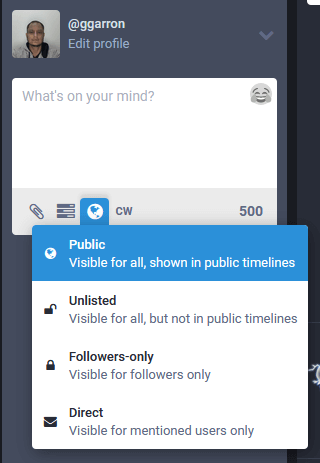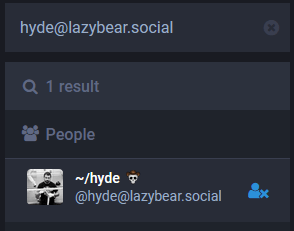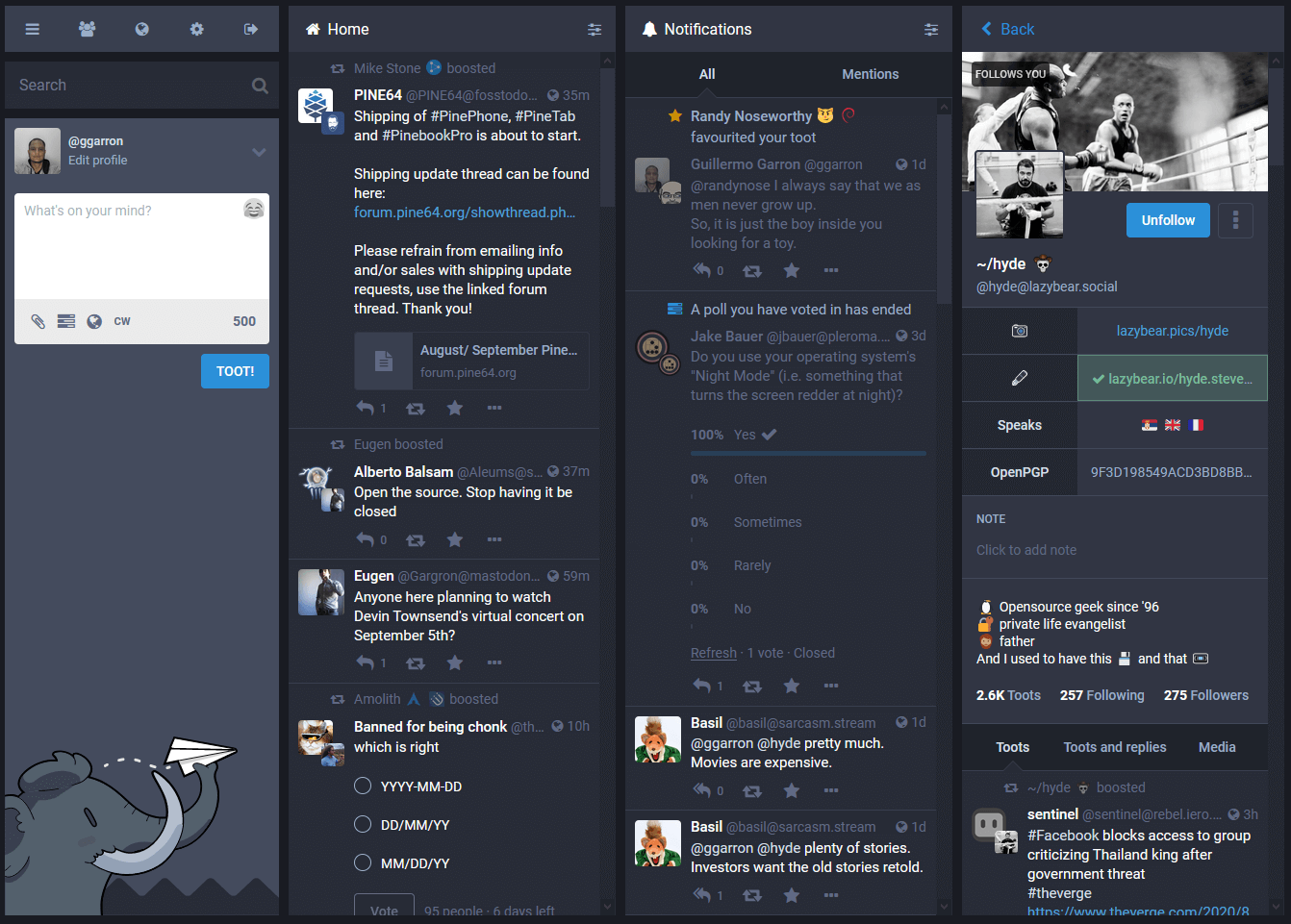August 24, 2020
Introduction
What is Mastodon?
Mastodon is a social network, but not any social network, it is a decentralized one, so you can consider it as a Twitter, but not owned by anyone. What’s more, much the same as Twitter, is a micro-blogging platform, meaning you have a limit of characters, 500 by default, but this limit can be removed.
Mastodon was created by Eugen Rochko in 2016, while as yet concentrating on the University, not long after graduating he delivered Mastodon, as an Open Source venture, to the general population.
Eugen wanted this Network to be independent, and not tied to any company or power behind it, not even under his control. It was thought to work as a Network of servers each one with its users and rules.
In 2017 the users exploded on the main instance (that is how Mastodon servers as called) which is managed by Eugen, and a lot of other instances started to show up.
Fediverse
To understand Mastodon, we also need to understand the Fediverse. The Fediverse is a Universe of Federated servers, being the for Blogging, Microblogging, or Social Network, all of them using open standard communication protocols to communicate between them.
This allows anyone with an account in any of these servers to communicate and interact with anyone with an account in any other server.
Instances
Instances are how servers are called in the Fediverse, they are just like email servers, once you have an account in a specific email server you can email any other if you know the address. Email use SMTP protocol to communicate between server and to deliver email from one to another.
In the case of Mastodon ActivityPub is the protocol used to communicate between servers, just like with emails, you can communicate with anyone just by having an account in one server and knowing the address of the person you want to interact with.
Accounts
Just like said before you only need one account in one of the instances, my account is ggarron@masto.one and if I want to interact with Hyde Stevenson, I need to know his address, which is hyde@lazybear.social. As you can see just like with an email address have two main parts.
username: hyde
server: lazybear.social
If you want to interact with a user of the same server where you have your account, you just need the username, if the other person has an account on a different server, then, you need both username and server name.
Toots
In Mastodon Network, the messages you publish are called Toots, and are equivalent to Tweets, birds tweet, and mastodon toots :).
Toots are 500 characters by default, which is enough most of the time, I have not needed to concatenate toots, but I usually need it on Twitter.
Toots from the people you follow appear in chronological order in your Timeline, from there you can reply, boost, or favorite them.
 Toot
Toot
Message recipients
With Mastodon, you can choose who will be able to see your Toots, below the text box you have the following options
- Public: Your toot, will be visible to everybody
- Unlisted: You toot, will be visible to everybody, but not listed in public timelines
- Followers-only: Pretty self-explanatory, only those who follow you will be able to see your toot
- Direct message: Only mentioned users will be able to see your toot
Those options cover all bases, I have only used public and direct messages, but some may find really useful the other options too.
 Mastodon Audience
Mastodon Audience
Reply
You can reply from your TimeLine to any toot on there, your reply will mostly be public and anyone will be able to read and reply to it.
Just like with Twitter, anyone can reply to any of your toots, provided they know your account.
Boosting
Boosting is like re-twitting, you spread you send the toot to your followers, they will the original toot, and the author, as well as you, being the one who boosted it.
Favs
Just like with Twitter or Facebook, you can like or favorite any toot, but unlike them there is no hurry in getting as many favs as possible, because no matter how many favs a toot have, it will not make it more visible or give the author anything.
Looking for users
There is a search box, where you can search for users, in the form of @user@domain, domain/@user or #hashtags, it searches on the local database, so the results will come only from the server itself and all other instances it has federated with, If you search for something that is on an instance your instance has not federated yet, you will find nothing.
 Mastodon Search
Mastodon Search
Following
To follow people you need to know his/her complete address, @user@domain, with only that information, you can follow anyone on any instance, provided that instance has not been banned by the administrator of the instance where you have your account.
If you want to be free to follow anyone, you may need to run your instance.
Biggest instances
The main instance or some sort of official one is Mastodon.Social, it is run by the creator of Mastodon, Eugen.
Some other examples of big instances (by number of users) are:
- Pawoo.Net: 641.000
- Mastodon.Social: 528.000
- mstdn.jp: 200.000
- Mastodon.Cloud: 60.000
If you want to list instances and discover a little about them try these sites:
Public instance or your own?
The best way to start on the Fediverse is by joining an existing instance, head to the sites listed above, read the rules of the instances, and choose one that fits with you. I recommend you to choose a big one because it is harder to go off-line, you can always move to another one later, Mastodon has this feature.
Another advantage of starting in a big instance is that the Local TimeLine will have more action, and you will meet more people, you just need to choose wisely the instance.
If you want to have more control, or if you love self-hosting your services, then you can start your instance, and move to it, with all your followers. There is still another option, you may want to have your domain, but avoid the hassle of running a server and keep it updated if that is your case I recommend you Masto.Host. I have not yet used their services, but my friend Basil is happy with them.
Moving to a new neighborhood
One great feature of Mastodon is that you can move from one instance to another without losing followers, that is important because otherwise, you will have to contact each of them to let them know you have moved. This is automatic.
You first need to create a new account, create an alias there to work as your old account too, after that you configure a redirect on the old account to the new one, that action will have the following effect.
- Move all followers from the current account to the new account
- Your current account’s profile will be updated with a redirect notice and be excluded from searches
- No other data will be moved automatically
- The new account must first be configured to back-reference this one
- After moving there is a cooldown period during which you will not be able to move again
- Your current account will not be fully usable afterward. However, you will have access to data export as well as re-activation
Using this feature, you may even start two or three accounts, and then when you realize which instance works the best for you, move everything to that one.
Privacy
With Google, Facebook, and all other big companies, as well as, governments spying us, it is nice when can be in control of your information, when you can get some privacy. Yes, some privacy, because nothing on the Internet is private, if you want complete privacy about something, do not put it on the Internet. Having said that, Mastodon as a software, and as a Network respects your privacy a lot more than any other social network. Let’s see some details:
Locked Accounts
You can lock your account to be in control of who can or who can not follow you, and using your account in that way together with posting messages only to followers you can control who can see your messages.
When you configure your toot to be shared only with your followers, boosting it is locked.
Direct messages
The most private way to share something on Mastodon is by sending a private message, it is only displayed on the timeline of the person it is intended to.
Keep in mind that your message is archived in your instance’s database, as well as, in the database of the recipient’s instance. Of course, this means that the administrators of both instances can read the message.
Apps
You can use the web app on any device, no matter if it is your PC, tablet or phone, but some prefer using Apps
I have tested these:
- Tusky (for Android): Which seems to be just a browser for you to use the web app
- Toot (for iOS): This one is paid, and I recommend it if you are on iOS, I have it installed on the iPad and works flawlessly.
If you are on Android, and you log in with your account using Chrome or Firefox, you will be asked to add the App to the Home Screen, if you accept it, a shortcut is created, but not only that, it will work as an App, getting notifications. For me, that is all you need if you are on Android.
There are also Apps for Mac, Linux, and Windows, but I also use it on the web browser
Front End
Mastodon Front-End is well crafted and looks like Tweetdeck, where the different columns are:
- Main: In this one, the first from the left, you have the menu to settings, the TimeLine selector, and the text box to send toots
- Home: This column has your main TimeLine, where your toots and all toots from the people you follow appear
- Notifications: In this column as its name suggests, all notifications are found, you can select between all of them or just mentions, which all toots that have mentioned you
- Multi-use: The last one is a multi-use column, it will show info based on what you have selected, for example.
- Local Timeline: Which shows toots from all users on the local instance
- Federated Timeline: Where toots from all instances your instance is federated with will appear
- User info: If you select any user (even yourself), basic info and toots from that users will appear in this last column
- Conversation: If you select any toot, it will be shown in this last column, will all associated toots.
 Mastodon Front End
Mastodon Front End
Alternatives
Because Mastodon uses an open protocol like Activity-Pub, there are also other services using that protocol that can be used to interact with Mastodon users.
Pleroma
Pleroma, is maybe the most common alternative, if you have an account on a Pleroma instance, you can communicate with Mastodon users, just like if you had a Mastodon account.
Pixelfed
While Pixelfed is not an alternative to Mastodon, if you have an account in any Pixelfed instance, you can also interact with Mastodon users.
Final Thoughts
I have discovered Mastodon while reading the blog of my old pal Kev, and talking about Kev, he has a great post explaining how mastodon works.
What I enjoyed the most here is the feeling of a small town, where everybody knows everyone, something lost in the big cities like Twitter or Facebook. I have seen no harassment, no bullying or trolling in Mastodon yet, I am sure this type of behavior exists in Mastodon too, I have chosen a nice town to live, where only nice people can be found.
I have decided to be on Fosstodon I run my instance, but follow people from Fosstodon and their friends.
If you do not have an account on a Mastodon Instance yet, please do yourself a favor, and create one, look for a nice small community and enjoy.